The Top 20 Dumbest Cars Of All Time
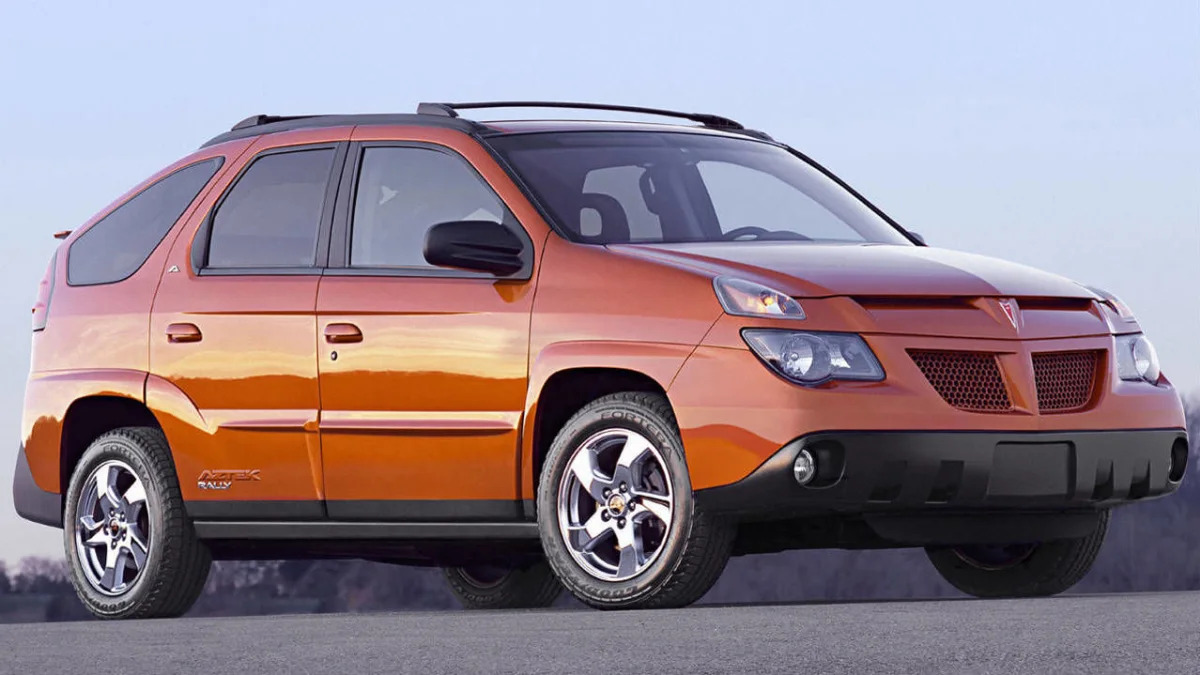
-

- Image Credit: GM
Stupid is as stupid does...
There are plenty of lists of "the worst cars of all-time" floating around the Internet. But we want to zero in on what we think is a more egregious failure than simply turning out a bad car.
What separates bad (as in "worst") from dumbest? In our judgement, the "dumbest" cars to be foisted upon the pubic are those that leave the would-be customers saying "What were they thinking?" These are the cars, and trucks, that are largely the result of colossal management ineptitude, hubris, ego-maniacal incompetence and organizational inertia.
The poster-car for bad cars is the Ford Edsel. It virtually defines failure. But it's not on our list, because we felt that the Edsel was the result of a bad, if well-meaning, product development process at Ford in the 1950s. The Edsel failed in the marketplace, because it was too conventionally styled given that Ford had been hyping it for months as a "new kind of car." The Edsel name didn't help. It was kind of the Saturn of its day--though less successful--an ordinary car hyped beyond all good sense. But the Lincoln Blackwood pickup, which did make our list, failed because a few high ranking executives defied all the input they got from engineers, accountants and even public relations people that said the product would be a fiasco. Why? Because they wanted it. Dumb.
There is no Yugo, no AMC Pacer and no Ford Excursion on this list. These were bad cars produced in well-meaning corporate systems. They just turned out badly. That's going to happen.
The 1990 Chrysler Imperial is on our list. Why? Because legendary Chrysler CEO Lee Iacocca stuck his nose into the product development design dome and wrecked what was going to be a marginally good car and turned it into a bad joke.
The editors of Autoblog put our heads together to come up with The Top 20 Dumbest Cars of All Time.Pontiac Aztek Information
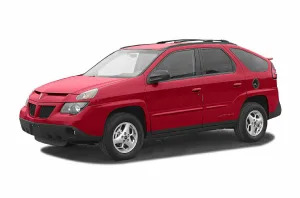
-
- Image Credit: Chrysler
20. Chrysler PT Cruiser Convertible
Chrysler PT Cruiser Information
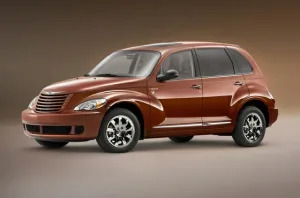
-
- Image Credit: Mercedes-Benz
19. Mercedes-Benz R Class
When Mercedes began offering the R Class in 2006, it marketed the vehicle as a multi-purpose-vehicle or MPV. We have also seen the language "sport cruiser," "family tourer," and "Grand Sports Tourer." While it has appealed to those few Americans who still relish a station wagon, there just aren't that many of them who have wanted to plunk money down.
From the start, the R Class looked like it didn't belong to the rest of Mercedes' lineup, like the company bought the design off the shelf from another automaker and stuck it in its showroom to fill an imaginary niche. The company has announced there will not be an R Class 2.0. Good move Dieter.
Why it's so dumb: At the time it was developed, Daimler-Benz was run by Juergen Schrempp. Somehow, Schrempp and the product chief got it in their heads that what the U.S. needed and wanted was a Euro-style wagon sort of pretending to be a crossover SUV. The design and stance of the car is flaccid. The U.S. execs at Mercedes-Benz the year it came out even griped privately to reporters that it was a monstrosity foisted upon them to help fill out the Alabama assembly plant. From the standpoint of aesthetics, rank-and-file designers at Benz were embarrassed. Once again, the cheese at the top of the company over-ruled the ones who knew best.
-
- Image Credit: GM
18. Chevy Vega
The Chevy Vega may have looked good on paper to John DeLorean, who was the head of Chevrolet at the time, but the final model never met the hype.
A small car with a wheelbase under 100 inches, the Vega had a long hood, short deck lid and a body that squeezed in at the bottom. The sum of its parts were worse looking than any individual piece.
The smooth body lacks any detail and touches of chrome look tacked on at the very end. It only proved the point that American car makers did not make very good small cars.
It was supposed to set a new standard for Detroit quality. It did the opposite. Ralph Nader wrote of the Vega: "It is a sloppily crafted, unreliable and unsafe automobile" that "hardly set a good example in small car production for American industry" A Time Magazine retrospective on cars called the Vega "a poorly engineered car notorious for rust and breakdowns." Joe Sherman's 1993 book In the Rings of Saturn said that "by its third recall, ninety-five percent of all Vegas manufactured before May 1972 had critical safety flaws."
Why it's so dumb: GM was hot to enter the small-car market hotting up from the Japanese and worries over higher fuel prices. It tasked an internal team with delivering a "world beater" in 24 months. Setting time limits on developing a world-class car is never a good idea. Better to tell the team to deliver a "world beater," and say how long it will take to do it right.
-
- Image Credit: Renault
17. Renault Dauphine
The Dauphine came form the illustrious era (we are being snarky) of French car building that followed World War Two.
It was a period of home-grown engineering that had French and foreigners alike wishing those working at Peugeot and Renault would go to cooking school instead.
Road and Track tested the car back when Eisenhower was in the White House and reported that it took them 32 seconds to go to 0-60. We're pretty sure most of us could beat this car on a bicycle.
But the world was hungry for cars, and Renault knew the quality bar was set pretty low. The company sold more than two million of these cardboard coffins the world over, including some that were shipped over to the U.S. to hopeless Frankophiles intent to either die on the road or spend half their lives in their garage hovering over an oil spot.
Why it's so dumb: Crappy, dangerous, rust-prone, slower than pulled pork. Renault execs conspired to create cheap, bad cars for spiking need in emerging markets, as well as its own.
-
- Image Credit: GM
16. Hummer H2
Because the H1 just wasn’t enough for the Rush Limbaugh crowd.
The Hummer H2 may have tried to appeal to outdoorsy adventure seekers, but what it attracted mostly were people who advocate for tofu to be actually banned by law.
By 2006, the H2, which ran on a 6-liter V-8 (and later the 6.2-liter V-8) and its pickup truck sibling, had become the poster cars for American excess and environmental insensitivity. Few other vehicles created such a visceral response from others than the H2.
It was discontinued in 2009 when General Motors filed for bankruptcy and eliminated the Hummer brand completely.
Why it's so dumb: GM launched this car after the terrorist attacks on 9/11/2001, an attack on the U.S., the causes of which are undeniably tied to America's century-long thirst for Middle-East oil and the country's seeming willingness to do anything to keep it flowing to the West as cheaply as possible.
The whole vehicle was in really bad taste, though we understand that there are plenty of state militia and World Wrestling Federation fans who think otherwise.
Hummer H2 Information

-
- Image Credit: Autoblog
15. 1913 Scripps-Booth Bi-Autogo
We kept our list to mostly real production cars marketed by real car companies, but we had to include a few experimental vehicles from the last century that represent such awful ideas as to be included in our tally.
This tippy looking creature was built around a motorcycle, weighed 3,200 pounds and appeared as if publishing scion James Scripps Booth hired his plumber to design its exterior--what's with all the copper tubing? Did it dispense water like an ice-maker?
According to The Wall Street Journal's Dan Neil, it was the first V8-powered vehicle ever built in Detroit. Even a bad idea had a worthwhile aspect or two.
Why it's so dumb: We know safety was not carrying a big premium 100 years ago in car design, but seriously…this thing looks like a circus ride more than a personal conveyance.
-
- Image Credit: Autoblog
14. 1899 Horsey Horseless
This car is so ridiculous that we couldn't not include it. The notion of inventor Uriah Smith, this buggy was meant to transition people from the horse-drawn carriage era to the horseless carriage new century.
What an idea? Bolting a horse's head on the front of the carriage, thus turning the car into a kind of Merry-Go-Round ride. According to Time Magazine retrospective that brought the car to our attention, Smith recommended the horse-head be hollow to hold petrol. Genius!
Why it's so dumb: Let's see…bolting a horse's head to soothe people's fear of the future. Perhaps the makers of electric cars should amplify the sound of a Shelby Cobra from under the hood from a high-fidelity speaker.
-
- Image Credit: Autoblog
13. Bricklin SV1
Memo to the world: When an auto executive starts a new car company and proposes to name the car after himself, run like a stag in the opposite direction, lock your check book and credit cards in a safe and ask your best friend to keep the combination away from you no matter how much you beg for it.
This scenario never turns out well. But Malcolm Bricklin had a little bit of a track record in co-founding the original import business in the U.S. for Subarus.
Dealers and romantics are always wanting to believe that some new car is going to be next Toyota. That is the secret to Bricklin's success post Subaru: the emotional pull too many of us have to get in on the ground-floor of something big, especially the launch of a new sports car.
The SV1 had 100-pound gull-wing doors, dent-resistant plastic body panels and bumpers that resisted a shine, a sluggish engine and no ashtray. Bricklin managed to produce more than 2,000 copies of this now moderately collectible headache that was never more than a car so awful to drive that it's proving ground runs could have been held in funeral processions.
Why it's so dumb: By the mid 1970s, the days of an entrepreneur being able to launch a credible car company were over. The dealers who lost money should have known better.
-
- Image Credit: Smart
12. Original Smart Fortwo
For people who like to park, the smart fortwo is the perfect vehicle. However, if you have to drive anywhere, it won’t be a fun trip.
The smart fortwo arrived in America after nearly a 10-year run in Europe, but it came with an automatic transmission that was miserable, with big shifting pauses and an underpowered 1-liter engine.
The car’s bug like looks and 8-foot-10-inch overall length does get a lot of comments, but an interesting looking car still needs to at least drive like a car. The smart fortwo does not.
The Mitsubishi engine is way out of date, which explains part of the story on why the fuel economy is so lame for a car this small.
Why it's so dumb: The whole smart division has never turned a profit for Daimler: hence, the lack of investment to keep the car up to date.
smart fortwo Information
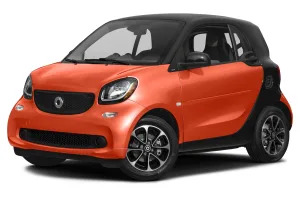
-
- Image Credit: Wikipedia
11. Fuller Dymaxion
Part of our history lesson, and nod to experimental cars from twentieth century gadflies, the Fuller Dymaxion is the opposite of the Tucker, which we named to our list of "Twenty Smartest Cars of All-Time."
Designer R. Buckminster Fuller originally conceived this car as a flying automobile, or a plane you could also drive to and from the local airfield. Wings off this beast, and it resembles an Airstream trailer or the Hindenburg. Take your pick. It also only sports three wheels, a nod to its flight capability? Honestly, we wouldn't want to be caught flying or driving this Dinty Moore can.
Why it's so dumb: We are back to the vehicle as multi-tasker syndrome. It's hard enough to design and produce a reliable and credible car, truck, plane or boat and bring it to market. Try to tackle both in one package, and you are asking for derision, ridicule and failure. The Dymaxion got all three from us and the world.
-
- Image Credit: Chrysler
10. 1990 Chrysler Imperial
Built on the legendary K-car platform that saved Chrysler in the 1980s, the platform and package was pretty out of date by the time 1990 rolled around. Still, Chrysler designer Tom Gale and president Bob Lutz had devised packaging to make it at least respectable for the Chrysler old guard. It wouldn't have been sexy, but it also wouldn't have been an embarrassment.
But then Lee Iacocca strolled into the design studio near the end of the program and ordered up, on the spot, opera windows to be installed in the rear seating area, and velour/velvet button-tufted interior upholstery that gave the Imperial's interior the look of a Turkish brothel stall.
Iacocca, for all his business and PR acumen, should have been banned from the styling studios at this point. Remember, he also gave the world the Pinto-based Mustang in the 1970s. Maybe it's time to re-evaluate Lido's legacy.
Why it's so dumb: Bad taste, driven into a project by an authoritarian CEO is bad business and bad leadership, not just a bad process.
-
- Image Credit: Autoblog
9. Chevy SSR
The Chevy SSR answered the question no one ever asked. Who needs a retractable hardtop convertible roadster/pickup?
The SSR, which stands for Super Sport Roadster, adopted a retro look with bubbly fenders, small windows and a big V-8.
Ultimately, General Motors got the answer to its question: About 25,000 people. It was discontinued in 2006.
Why It's so dumb: The was never any business case for this vehicle. It was an outlandish vehicle idea approved by then-CEO G. Richard Wagoner Jr. so that he could make its announcement at an industry conference not long after he took the CEO's office. It was meant to show he could takes risks and think out of the box. This thing should have stayed in the box.
-
- Image Credit: Volkswagen
8. Volkswagen Phaeton
The truth is that the Phaeton is a pretty darn fine sedan. Heck, it shares an engineering platform with the Bentley Continental GT/Flying Spur. Another truth is that few people care. That's because there is a substantial disconnect for most buyers, whether German or American, between spending something North of $70,00 for a sedan and seeing the VW brand logo in the middle of the steering wheel.
The car was the brainchild of former VW CEO (and current supervisory board chairman) Ferdinand Piech. He is the grandson of Volkswagen Beetle designer Ferdinand Porsche, and the head of the Piech clan, which also controls Porsche AG. In other words, what Piech wants…Piech gets. And he wanted a VW branded sedan that would rival a Mercedes-Benz S Class, BMW 7 Series. Period. The idea still strikes many as weird given that Volkswagen AG also operates Audi, and thus has the Audi A8 to take on the big boys, as well as Bentley, Lamborghini and Bugatti.
The announced goal was 20,000 Phateon sales worldwide a year. The reality has been about 6,000. There was so little interest in the U.S. for the car that former VW CEO Bernd Pischetsrieder yanked from U.S. distribution. He did so without consent from Piech, and it was a move that, in part, cost the CEO his job. Now, that's a vanity project!
Why it's so dumb: As good a driver as the Phaeton is, and was from the beginning, the number of people wanting to spend upwards of $100K for a loaded sedan with a VW bags on it is pretty much restricted to German government heads and Piech family and staff. A true vanity project by the chairman with no one in a position to tell him he was off the tracks.
Volkswagen Phaeton Information

-
- Image Credit: Lincoln
7. Lincoln Blackwood
Ford CEO Jacques Nasser and his luxury brand chief Wolfgang Reitzle thought it was a great idea: a luxury Lincoln branded pickup truck with a trunk instead of a flat bed, and pin-stripe painting to mimic a business suit. Seriously.
In the end it, was still a pickup. Except it had came with only one color scheme: a black exterior and interior. The truck bed was, in fact, redone as a trunk. When the cover actually worked that trunk was okay for handling luggage, golf clubs or a skin diving kit -- the kinds of things the marketing folks felt the Blackwood's customers, both of them, would be apt to stow. It was also rear-drive only. No four-wheel-drive meant that this black bauble would be the equivalent of a pocket-book dog for the biggest jerks you could imagine playing golf with.
It had only one model year, 2002, thought it took three years to sell all of the Blackwoods produced.
Why it's so dumb: There was no support for this vehicle at Ford below the executive suite. It was one of those vanity projects hatched at the top, with middle managers, especially at Ford, dissenting only at their own career peril.
Lincoln Blackwood Information
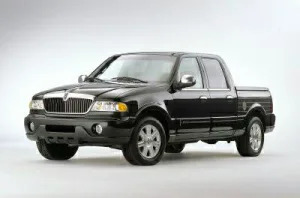
-
- Image Credit: Ford
6. Ford Mustang II
Change is not always good. Just look at the 1974 Ford Mustang, the beginning of the second generation pony car.
But this Mustang has humble beginnings, as it was based on the Pinto’s platform for starters -- just not with the same "explosiveness" when rear-ended.
Things only get worse from there. The Mustang II, as it was called, was smaller and heavier than its predecessor and did more to hurt the nameplate than anything Chevy ever could have done.
Ford Motor Company President, the infamous Lee Iacocca who launched the original Mustang, made the decision to put this Mustang II into production. It was meant to compete with the Toyota Celica. To address new fuel economy regs, it featured a 2.3 liter inline-4-cylinder engine producing 88 horsepower. (less than a 600cc sportbike makes today!) Over its five year life, Ford sold over 1 million Mustang II models and it was even named Motor Trend Magazine's Car of the Year in 1974.
Those accomplishments proved two things: A large number of the American public will, if you give them the opportunity, pay big money for horse manure if you give it the right name and color; and MotorTrend, back in the day, had to be trading annual honors for ad pages. That is not the case today, but back then…
Why it' so dumb: Iacocca had launched an icon. When he had the chance to lead its redesign, he cheaped out and undercut one of the most celebrated cars and brands of the twentieth century. Ford engineers and managers knew it was a truly awful idea to use the Pinto platform for a new Mustang. They did it anyway. Directing the engineers on this project was like asking Michelangelo to paint the fence outside of St. Peter's after doing the Sistine Chapel.
-
- Image Credit: Nissan
5. Nissan Murano CrossCabriolet
Find this deal in your area
See Local DealsNissan Murano Information
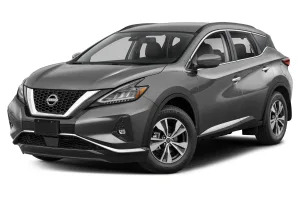
-
- Image Credit: Cadillac
4. Cadillac Cimarron
It was a bad idea that got worse. Pressed by CAFE standards and fear of new small cars coming from Mercedes-Benz and BMW, Cadillac needed a fuel-efficient small car to join its line- up. So, GM took a Chevy Cavalier (seriously), doubled its price by adding a bunch of standard features and called it the Cadillac Cimarron.
The first Cadillac to come with a four-cylinder engine in seven decades, the Cimarron lacked sophistication, solid performance or anything else the Crest-and-Wreath brand once stood for. The car came with a four-speed manual transmission option if you can believe adding that much insult to brand injury. It was a re-badged Chevy--a bad Chevy at that--and everyone knew it. Engineers at GM who were ordered to carry out the brief hated working on it. A few, we are told, even took early retirement to get out of it. This piece of automotive flotsam was actually sold for seven long years.
Why it's so dumb: Seriously? Isn't it enough that they looked at a Chevy Cavalier and saw a Cadillac hiding in there somewhere.
-
- Image Credit: Amphicar
3. 1961 Amphicar
Here is another experimental car for our list because it shows the odd propensity of inventors and engineers to figure out multi-tasking duties for a car. The Amphicar is a nod to the Volkswagen Schwimmenwagen developed by the Nazis during WW2 for amphibious landings.
"Imagine Schultz! Drive the car down the bank and across the river without having to find a boat, and then drive it out of the water on the other side without stopping. What could go wrong?"
Plenty. The Amphicar is a terrible car and crappy boat. It takes on water pretty easily and requires a bilge pump to keep it afloat. There are a surprising number of the more than 4,000 produced between 1961 and 1968 still on the road or in garages and marinas. Well, maybe it's not so surprising. If you own one of these wheeled barges, you are going to constantly tinker the thing so as to show it off when you can.
Why it's so dumb: A car, a boat and a trailer is a much better option. And who needed an unarmed car like this for an amphibious landings in the early 1960s besides Thurston Howell III.
-
- Image Credit: GM
2. Pontiac Aztek
The road to hell will be filled with Pontiac Azteks. It may have been a crossover with good intentions, groundbreaking interior design and not bad to drive, but it is pure ugly from bumper to bumper in a convoluted mix of plastic, metal, glass and a back end that looks as if it was chopped off with a meat cleaver.
The ribbed gray cladding on the original 2001 model only made it look worse. The most ubiquitous Aztek, though, came in Ticonderoga-pencil yellow, and sported black cladding. It looked like a giant bee on the road.
A buyer could get an air compressor to pump up car-camping sleeping mattresses (as well as the attachable tent), four-wheel drive and a slew of other driver friendly features. We liked the center console that doubled as a removable cooler. But it’s awful looks killed the Aztek in one generation and set General Motors back a decade when it came to creating great crossovers.
Why it's so dumb: At the dawn of the surge in crossovers, GM chose to build the Aztek on the platform of its minivan, the most spectacularly awful and most reviled minivan in the industry no less. Do you recall the GM minivans that resembled giant dust-busters? Yup, those minivans. In 2000, months before the launch of the Aztek, the head of GM North America was already predicting failure of the vehicle to reporters. That was a tip-off. GM execs cheaped out here, and were leading a system that minimized the influence of competent designers, and maximized the influence of accountants who sought to produce cars at the cheapest cost.
Pontiac Aztek Information

-
- Image Credit: Ford
1. Ford Pinto
Fewer cars hurt America’s perception of hatchbacks than the Ford Pinto, a car that debuted with a 75 horsepower four-cylinder engine.
Back in the 1970s, Ford Motor Co. needed something to compete against the Japanese compact cars and Volkswagen Beetle that were growing in popularity. Ford’s answer was the Pinto, a pudgy two-door hatch with low riding bucket seats. Worse yet, the Pinto spent the entire Me Decade accused of being an exploding death trap. Those are never the words any company wants to be associated with.
Why it's so dumb: It's the hubris Ford executives brought to the table. There is a paper trail leading to a memo in which Ford brass weighed the cost benefit analysis of changing the engineering of the car to make it safer versus paying our injury and death claims it knew would come. Worst of all, the Pinto, in part because of its budget pricing, were scooped up by many a college student and was one of the cars that ultimately decreased sales and popularity of the VW Beetle. So, this car was aimed at the least experienced drivers in America, and most prone to be in accidents. And after the truth came out, it soured a lot of those kids and their parents on buying more Fords just as the Asians were rising, and redefining quality in America.



















